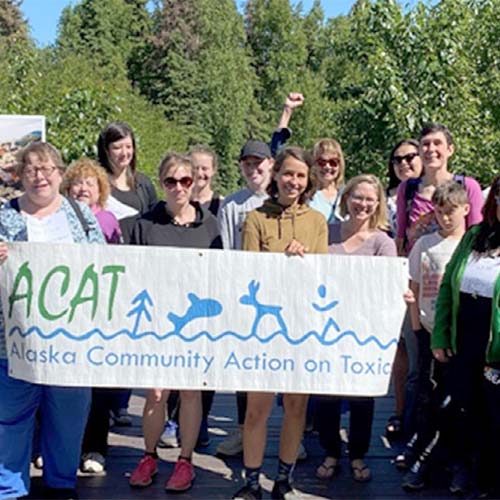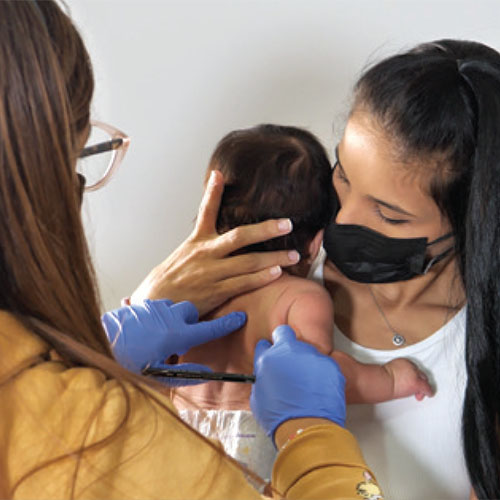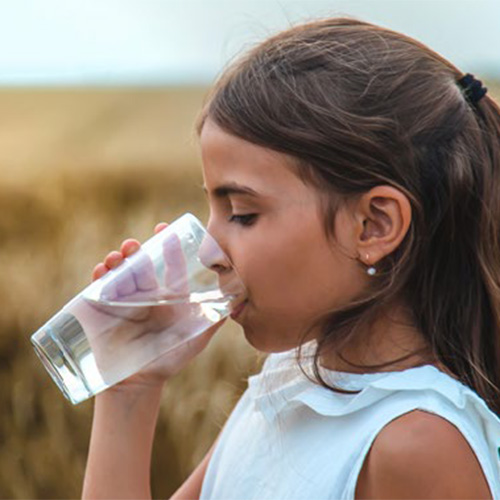Below are sample translational research stories that illustrate how the framework can be used to demonstrate the evolution of an idea through the various translational research categories.

Addressing Childhood Asthma in Rural Agricultural Communities
The National Institute of Environmental Health Sciences (NIEHS) supported a study that may lead to improved health for children suffering from asthma. Asthma is a serious respiratory disease that affects about 6 million children in the U.S., causing wheezing, difficulty breathing, and coughing.

Protecting Arctic Communities
Alaska Community Action on Toxics researchers work with tribal members, health care professionals, students, teachers, and scientists to conduct community-based participatory research that has revealed the extent of contamination in the island and associated health effects.

Protecting Children From Pesticides
NIEHS-funded researchers have worked with pregnant mothers, children, and child care providers to understand the effects of pesticide exposure on asthma, and whether integrated pest management can reduce exposures and associated health effects.
- Protecting Children From Pesticides (1MB)
- Protecting Children From Pesticides (940KB)
- Reference List Protecting Children From Pesticides (39KB)

Protecting Farmworkers and Families From Pesticide Exposure
NIEHS funds researchers to work with agricultural communities to prevent exposure to organophosphate pesticides, which are commonly used in commercial agriculture to control insects.
- Protecting Farmworkers and Families From Pesticide Exposure (1MB)
- Timeline for Protecting Farmworkers and Families From Pesticide Exposure (698KB)
- Reference List Protecting Farmworkers and Families From Pesticide Exposure (85KB)

Protecting the Health of Mothers and Babies
Funded by NIEHS Superfund Research Program (SRP), a team of researchers studies environmental exposures that lead to high rates of preterm birth, and other adverse health outcomes, among mothers and their babies in Puerto Rico. The program is called Puerto Rico Test Site to Explore Contamination Threats (PROTECT).
- Protecting the Health of Mothers and Babies (1MB)
- Timeline for Protecting the Health of Mothers and Babies (872KB)
- Reference List Protecting the Health of Mothers and Babies (455KB)

Reducing PFAS in Drinking Water
NIEHS funds researchers to work with communities to identify sources of exposure to harmful chemicals like per- and polyfluoroalkyl substances (PFAS) and to prevent these exposures.
- Reducing PFAS in Drinking Water (1MB)
- Timeline for Reducing PFAS in Drinking Water (656KB)
- Reference List Reducing PFAS in Drinking Water (115KB)

Understanding Pesticide Toxicity
Exposure to a group of pesticides called organophosphates can contribute to neurodevelopmental problems, among other health challenges. Since 1989, the National Institute of Environmental Health Sciences (NIEHS) has supported research into the role of a gene called PON1, which helps protect people from the harmful effects of organophosphate exposure.
- Understanding Pesticide Toxicity (1MB)
- Timeline for Understanding Pesticide Toxicity (808KB)
- Reference List Understanding Pesticide Toxicity (76KB)


